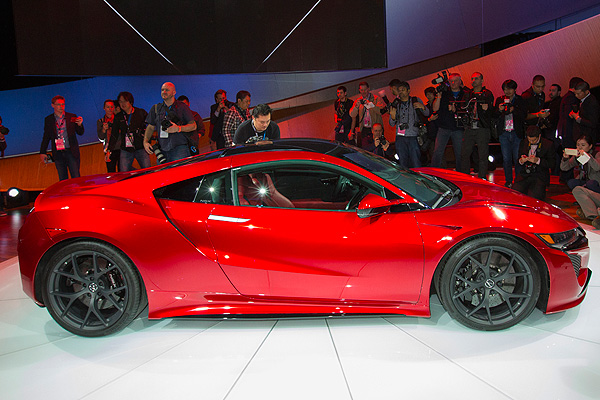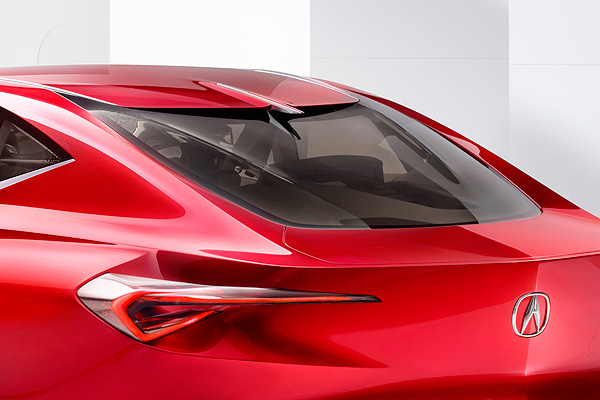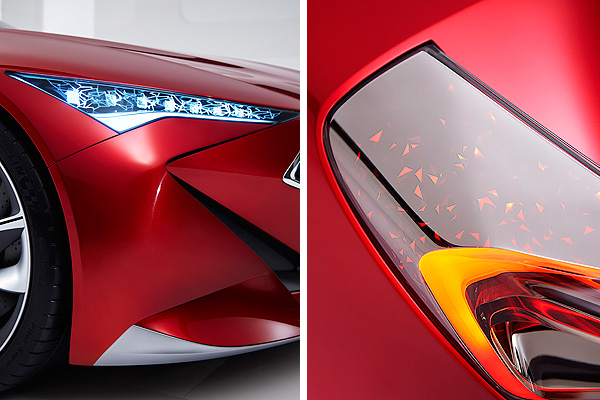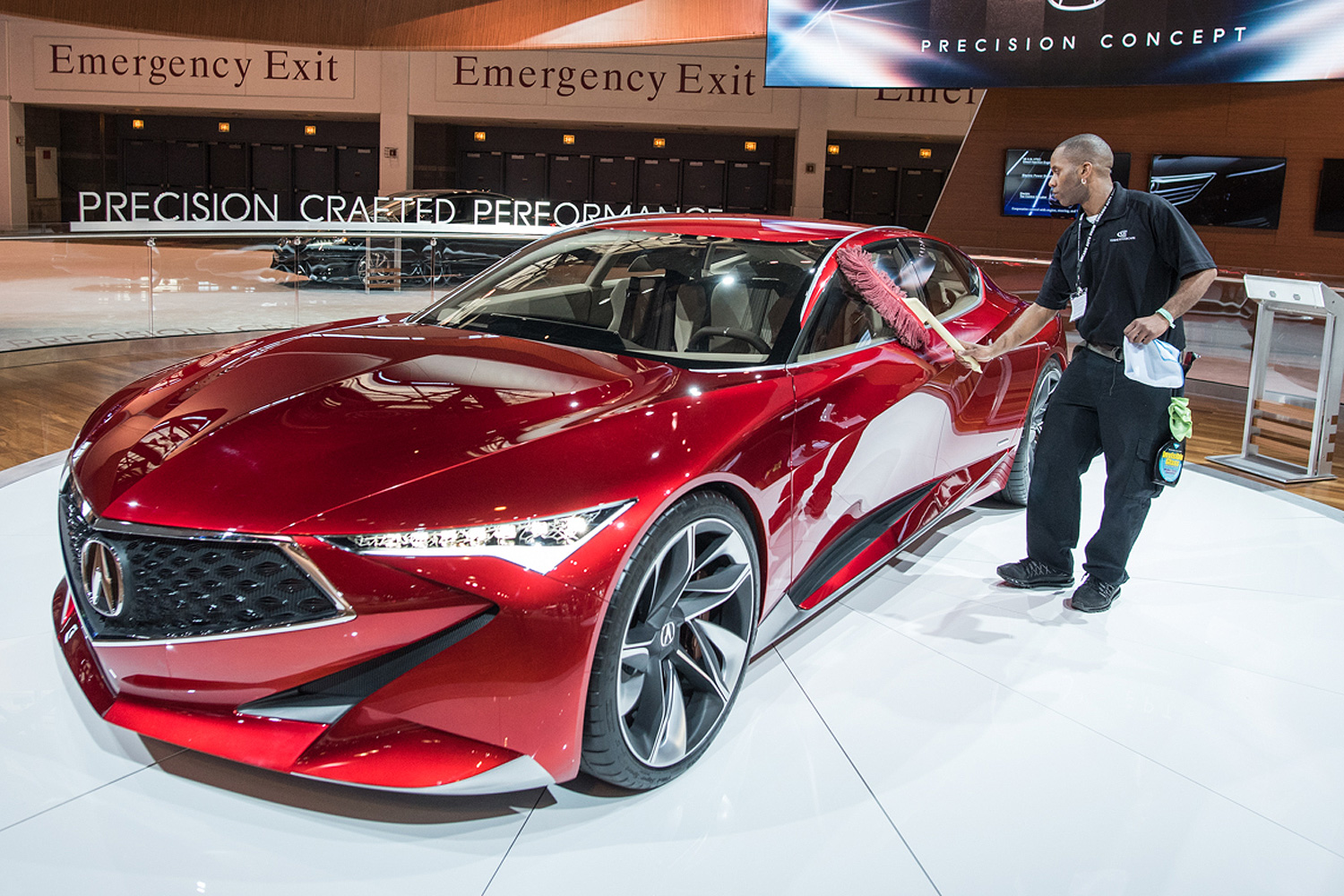Earlier today I posted an interview I did with Andre Hudson, lead designer of Hyundai's Genesis Vision G coupe concept. For the same reasons I wanted to talk to Hudson, I also spoke to Michelle Christensen, the exterior project leader on the Acura Precision Concept, which debuted in Detroit just before the Chicago Auto Show.
Christensen decided to become a car designer in community college and had to play catch-up to get a portfolio, but she also had an early and deep exposure to cars through a gearhead, hot-rodding family. And once she got into the business, she rose quickly—at 34 she was the first female lead designer on a so-called supercar, the $150,000 2016 Acura NSX.
When you went to apply to school for car design, you had no cars in your portfolio?
I had my AP art portfolio. It was acrylic paintings, still lifes, animals, people. There were no cars in it.
Why did you decide to pursue cars?
I kind of just stumbled on it. It sounded like the perfect combination of two things that I was really passionate about: art and making things for people. I also love cars. I grew up in a gearhead family. It just seemed like it would be an ideal job. I just started doing research about it and found the ArtCenter [College of Design in Pasadena], which is where I went to school. I showed them my portfolio of my paintings and drawings, and I told them I wanted to go to school for car design, and they were like, “Well, you kind of need a car in your portfolio.”
What do you learn when you're literally just starting out?
They start out with really, really foundational things. A perspective-drawing class, where you learn to draw things in perspective and how to make it look consistent, and how to draw from certain high-point angles. They had a class where we were literally rendering in charcoal cones and spheres and cubes, to learn how to light an object, and how light an object and how different shapes light different ways, which obviously all translates into a car, because you've got long, flat body sides with big bulgy fenders.
I read that your favorite car of all time is the ’67 Chevelle. What do you like about it?
It's actually changing to a ’65 Chevelle, because that's what I just got. I finally got my dream car, it's just a slightly different year. More and more I'm falling in love with the ’65. I love the simplicity of that car. It's timeless. It's a very long, simple, beautiful car. I love the proportions. I love that it's very authentic materials—just a big steel box. I think everyone looks good sitting in them—timeless and classy. I love that whole era of the '60s.
Did you grow up around that era of cars?
I did. When I was younger my dad was a big Mopar guy. My whole family, him and his brother, my grandpa, even my mom was into going to the races with them. My dad always had muscle cars. He had a Hemi GTX, a Super Bee, a Dart, all these Dodge muscle cars. When I was about 11 or 12 he started to get into hot rods, and was buying '32 roadsters and that stuff. I was always annoying him in the garage, asking him questions.
When you started with the new NSX, what ideas did you come to it with?
The NSX, we definitely wanted to keep the purity of the original NSX. It's such an icon for our brand. Even though it's a totally different generation of NSX, we didn't want to go the complete retro route; we want to stay true to what our customers are excited about. But distilling the form down to just what it needed to be, and using the design to help the performance of the car, is our way of preserving the heritage of the original NSX.

How does the design work with the performance?
Basically every surface of the vehicle is tuned; we didn't want to have any active aero components, because we wanted to maintain a lighter weight and less complexity in parts.
There's a big dance in airflow in and out of the car, all over the place. Where air is coming into one vent, it might exit another and create downforce, and we kind of redirect that air using the surfaces of the body into another vent. We tried to strategically force air in and out of the car, down the whole body side and over the roof, so we'd really get the most efficient use of the airflow.
So a lot of the design choices you see in the car, a lot of that is engineering airflow.
Some of it, yeah. From a styling standpoint, we wanted to exaggerate it a little bit more, to give it that exotic-car feeling, so some of the things that we wanted to do to enhance the design were kind of a bonus in that they helped reach the performance targets the team had.
When you say that you wanted to give the NSX an exotic look, what design aspects make that?
For a car like a supercar, a mid-engine, there are classic proportion cues that you want to exaggerate. You want the car to be super-low and wide, first and foremost, so all of the lighting elements, we made them very short in height and very wide, so they emphasize the width of the car. We wanted to sink the cabin down so it doesn't look like you're flopping the cabin on top of a chassis. We wanted the cabin sunken down between all the wheels and kind of in the middle, and that's what makes it feel like a supercar. So we played a lot with the proportion of the cabin and really pushed the C-pillars forward, so we could get it sunken between the wheels.
And then it also emphasizes the fenders, which a) always looks cool and b) the front fenders, you can see them from the driver's seat, so it's also a good indication of where the corners of the car are, so when you're driving you feel more in control. When you're turning, you have really precise guidelines for the dimensions of the car.
When it was finally done and produced, what were the elements that really surprised you, or that you really thought turned out well?
One of the most interesting parts of the car that's maybe not so readily noticeable is that we really wanted to play with the boundaries of the exterior and interior. When you open the suicide doors, there's a part that's a chrome trim on the side, a fairly general place that a lot of cars have metal trim, but when you open the doors, you notice that it actually flows into the interior, and under the rear seat, and is actually holding the floating rear seat.
In a development project it's hard to keep a constant conversation between interior and exterior, because you tend to go off and do your own things. We wanted to bring more of a conversation back between the two zones.

There's also another area, for example, we have a little spine, rear high-mount light that's on the back of the roof, and it actually pierces through the rear glass, and it splits and becomes the rear headrest. It's kind of a floating, structural piece. That's another expression of this continual inside-outside. I'm proud of our whole crew that put this whole crew, because there were definitely some things where you're like, "I'm crossing my fingers that this is going to come out right, even though we've been rendering it, doing the math."

I think the lighting is also very interesting, too. With the exterior lighting, we wanted to get away from the more mechanical feel that, I think, a lot of automotive headlights and taillights have gotten towards. There's a lot of beautiful detailing in the lighting today, but it feels very mechanical and organized. We thought it would be interesting to take cues from nature, like lightning, and fragments of diamonds, lights dancing across those different, fragmented elements. It just adds a little extra modernness to it.
We wanted to have something on the car that's a little chaotic, because with most cars everything is really thought-out, certain patterns are repeated, and it's very neat and tidy, so we wanted these areas where you just see these crazy little fragments, bits and pieces, just to kind of stir it up a little bit.



